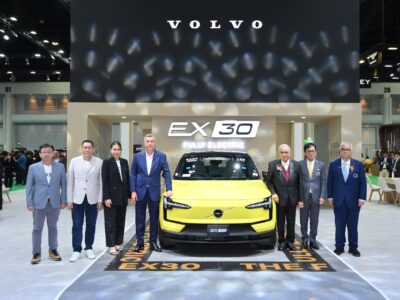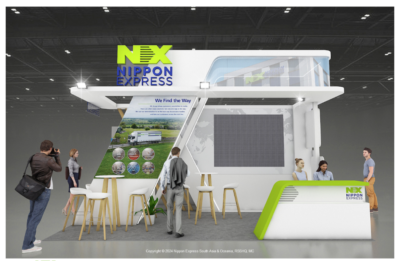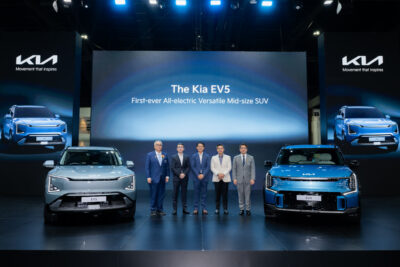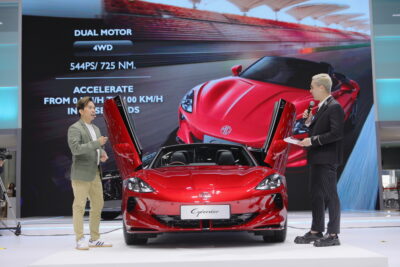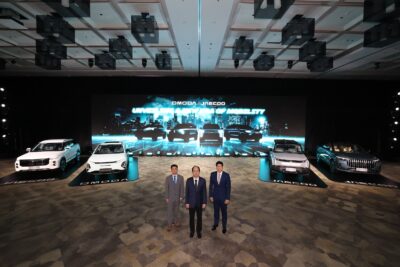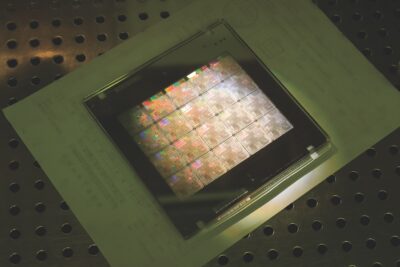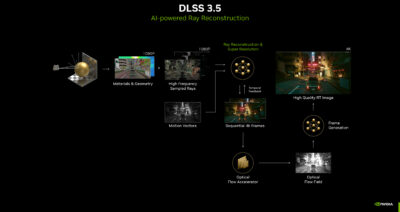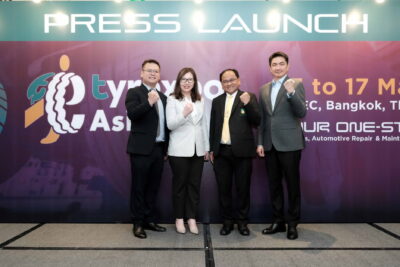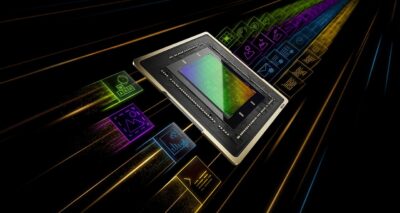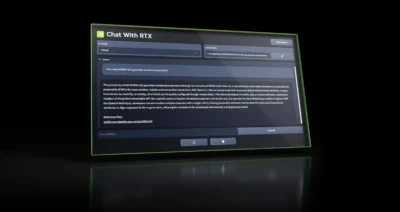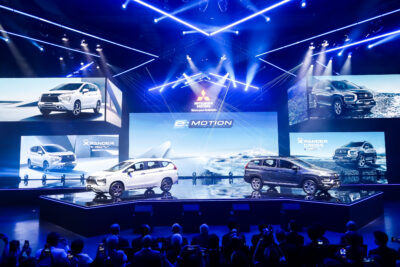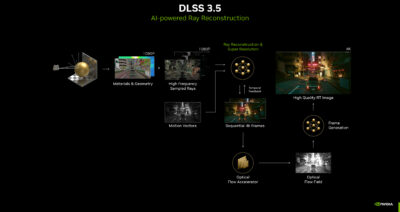
The Chrysler Portal concept offers a future look at family transportation, one where a single vehicle is engineered to be flexible enough that it easily adapts to evolving life stages and advances in technology.
Developed with the millennial generation in mind, the Chrysler Portal concept melds the need for vehicles of the future to operate effortlessly in crowded urban environments. At the same time, the Chrysler Portal integrates with advanced technologies – in the surrounding infrastructure and devices brought into the vehicle by occupants – to minimize any discomfort

Entryway to autonomous driving
The Chrysler Portal concept uses current and near-term sensor technologies, along with advanced computing power and vehicle network infrastructure, for SAE Level 3 autonomous driving. The Portal is designed to accept technology upgrades that would let it operate in full autonomous driving mode, if desired by the owner.
To operate at Level 3 autonomous mode, the Chrysler Portal concept must “see” its location and surrounding environment. To do that, it relies on a suite of sensing technologies, including:

Cameras: A combination of short- and long-range cameras to see forward, the sides and rear of the vehicle. The cameras can provide the driver a view of the road ahead and behind, as well as “ground truth” information, such as lane markings and potholes. Also, a camera in the interior monitors the driver

Radar: Using radio waves, detects objects to the front, rear and corners of the vehicle.

LIDAR: Using light from pulsed laser beams to illuminate and sense objects ahead of the vehicle

Ultrasonic: Sensors embedded in front and rear bumpers can sense the presence of multiple objects within a short range
These sensing technologies, in various forms, are in use today in some FCA vehicles, such as radar sensors for Blind-spot Monitoring, radar and cameras for Forward Collision Warning-Plus and adaptive cruise controls, and ultrasonic sensors for ParkSense park assist systems.
In addition, other technologies needed for Level 3 autonomous driving include:
Global Positioning System (GPS) connectivity for the vehicle to determine its location
Internet/cloud connectivity for real-time traffic, weather and infrastructure information
Redundant steering and brake actuators, and a redundant power source
High-speed computer modules for near range and inertial sensing, high-definition maps and decision making

Maximum interior, minimized exterior
The interior of the Chrysler Portal concept contains about 180 cubic feet of space and comfortably holds up to six adult, yet does so in a vehicle with an exterior footprint that is significantly smaller than many of today’s family and utility vehicles.
The Chrysler Portal concept’s approximate 100 kilowatt-hours (kWh) lithium-ion battery pack is mounted beneath the vehicle floor, creating a solid platform and maximizing interior volume by removing any drivetrain intrusions.
The innovative in-floor track mounting system for the Chrysler Portal’s adjustable seats and console frees up foot and legroom by dispensing with traditional seat tracks.
The Chrysler Portal’s electric motor is a fraction of the size of an internal combustion engine, which enabled engineers to reduce the Portal’s front overhang by five inches. At the same time, by moving the base of the windshield forward, the interior was further expanded.
An abundance of natural light amplifies the spaciousness inside the Chrysler Portal. Light enters through the large windshield, upper and lower windows in each sliding door unit and the clear polycarbonate roof panel.

The Chrysler Portal concept offers a future look at family transportation, one where a single vehicle is engineered to be flexible enough that it easily adapts to evolving life stages and advances in technology. Developed with the millennial generation in mind, the Chrysler Portal concept melds the need for vehicles of the future to operate effortlessly in crowded urban environments. At the same time, the Chrysler Portal integrates with advanced technologies - in the surrounding infrastructure and devices brought into the vehicle by occupants - to minimize any discomfort

Entryway to autonomous driving The Chrysler Portal concept uses current and near-term sensor technologies, along with advanced computing power and vehicle network infrastructure, for SAE Level 3 autonomous driving. The Portal is designed to accept technology upgrades that would let it operate in full autonomous driving mode, if desired by the owner. To operate at Level 3 autonomous mode, the Chrysler Portal concept must "see" its location and surrounding environment. To do that, it relies on a suite of sensing technologies, including:
 Cameras: A combination of short- and long-range cameras to see forward, the sides and rear of the vehicle. The cameras can provide the driver a view of the road ahead and behind, as well as "ground truth" information, such as lane markings and potholes. Also, a camera in the interior monitors the driver
Cameras: A combination of short- and long-range cameras to see forward, the sides and rear of the vehicle. The cameras can provide the driver a view of the road ahead and behind, as well as "ground truth" information, such as lane markings and potholes. Also, a camera in the interior monitors the driver
 Radar: Using radio waves, detects objects to the front, rear and corners of the vehicle.
Radar: Using radio waves, detects objects to the front, rear and corners of the vehicle.
 LIDAR: Using light from pulsed laser beams to illuminate and sense objects ahead of the vehicle
LIDAR: Using light from pulsed laser beams to illuminate and sense objects ahead of the vehicle
 Ultrasonic: Sensors embedded in front and rear bumpers can sense the presence of multiple objects within a short range
These sensing technologies, in various forms, are in use today in some FCA vehicles, such as radar sensors for Blind-spot Monitoring, radar and cameras for Forward Collision Warning-Plus and adaptive cruise controls, and ultrasonic sensors for ParkSense park assist systems.
In addition, other technologies needed for Level 3 autonomous driving include:
Global Positioning System (GPS) connectivity for the vehicle to determine its location
Internet/cloud connectivity for real-time traffic, weather and infrastructure information
Redundant steering and brake actuators, and a redundant power source
High-speed computer modules for near range and inertial sensing, high-definition maps and decision making
Ultrasonic: Sensors embedded in front and rear bumpers can sense the presence of multiple objects within a short range
These sensing technologies, in various forms, are in use today in some FCA vehicles, such as radar sensors for Blind-spot Monitoring, radar and cameras for Forward Collision Warning-Plus and adaptive cruise controls, and ultrasonic sensors for ParkSense park assist systems.
In addition, other technologies needed for Level 3 autonomous driving include:
Global Positioning System (GPS) connectivity for the vehicle to determine its location
Internet/cloud connectivity for real-time traffic, weather and infrastructure information
Redundant steering and brake actuators, and a redundant power source
High-speed computer modules for near range and inertial sensing, high-definition maps and decision making

Maximum interior, minimized exterior The interior of the Chrysler Portal concept contains about 180 cubic feet of space and comfortably holds up to six adult, yet does so in a vehicle with an exterior footprint that is significantly smaller than many of today's family and utility vehicles. The Chrysler Portal concept's approximate 100 kilowatt-hours (kWh) lithium-ion battery pack is mounted beneath the vehicle floor, creating a solid platform and maximizing interior volume by removing any drivetrain intrusions. The innovative in-floor track mounting system for the Chrysler Portal's adjustable seats and console frees up foot and legroom by dispensing with traditional seat tracks.
The Chrysler Portal's electric motor is a fraction of the size of an internal combustion engine, which enabled engineers to reduce the Portal's front overhang by five inches. At the same time, by moving the base of the windshield forward, the interior was further expanded. An abundance of natural light amplifies the spaciousness inside the Chrysler Portal. Light enters through the large windshield, upper and lower windows in each sliding door unit and the clear polycarbonate roof panel.







